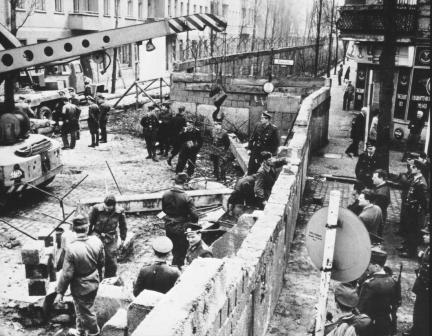My first visit to Texas in the early 1980s, to visit friends in Houston and in-laws in Dallas, I met Blue Bell Ice Cream. It was love at first bite, of course.
Ice cream plays an important role in my family. Family reunions, or just any celebration in summer, were excuses to pull out several hand-cranked ice cream makers, and freeze away. Homemade vanilla delights the palate, and family gourmands grind vanilla beans to add a little extra oomph. When grandfather Leo Stewart had peaches from his orchard, or later just peaches from our backyard tree in Pleasant Grove, Utah, fresh peaches went into the mix. Only someone who experienced my father’s peaches in my mother’s custard, frozen in a hand-cranked freezer, could fully appreciate Willie Stark‘s lines about peach ice cream in Robert Penn Warren’s book, All the King’s Men.
Homemade ice cream is a bother. Better freezers are not cheap, and they don’t travel well. My mother’s mini-freezer disappeared sometime in one of her later-life moves. My father’s much larger, two-gallon colossus simply wore out, with most of the ferrous metal parts rusting away, and even the wood of the barrel crumbling to dust. Proper salt to get the solution colder than freezing is sporadically available in city supermarkets. My mother’s recipe for the custard, unwritten as all her better recipes, died with her.
Utah is a haven for ice cream makers. Snelgrove’s on 33rd South in Salt Lake City is tradition in many families (Snelgrove is now owned by Dreyer’s, but still operates as Snelgrove in Utah) (Update, July 2008: Snelgrove’s is dead). My wife’s family is partial to Farr’s in Ogden, “Farr better ice cream” — and it is very, very good. Trips to visit family include stops at Farr’s.
Blue Bell Homemade Vanilla tastes like my mother’s custard frozen in a hand-cranked freezer. It is consistently the best-tasting ice cream, for a very reasonable price.
Blue Bell celebrates its 100th anniversary as a company in 2007, the “little creamery” in Brenham, Texas, where Blue Bell is made.
Even better, the company wants you to suggest new flavors, and is holding a contest to get good, local flavors. Winners of the Taste of the Country Flavor Contest get a trip to Brenham for the 100th anniversary celebration.
Plus, winners get a year’s supply of Blue Bell ice cream.
Blue Bell is a nice local company making good. Though the production is limited (and I believe it is still true that all the ice cream is made in Brenham), so it is available only in 17 states concentrated in the southeast, the brand is the third best-selling brand in the U.S.
If you’re near Houston, you would be well advised to make a side trip to Brenham to tour the Blue Bell ice cream factory (plus, the bluebonnets will be in bloom shortly).
North America is a big continent, with international brands that work for international consistency of products, so that the company’s customers get the same experience regardless where the customers are — think McDonalds, Burger King, and Coca-Cola. Large conglomerates often own even nominally regional brands. As I noted earlier, Snelgrove’s in Salt Lake City is now run by a national ice cream giant — even Ben & Jerry’s brand is now owned, produced and marketed by a national marketing giant. Blue Bell is a standout, an almost-local brand, with limited distribution. Part of the joy of a well-working free enterprise system is finding a well-run local company, with a unique product.
Blue Bell could make a fortune bottling their success formula, too, in addition to their ice cream.
![]()






 Posted by Ed Darrell
Posted by Ed Darrell 
















